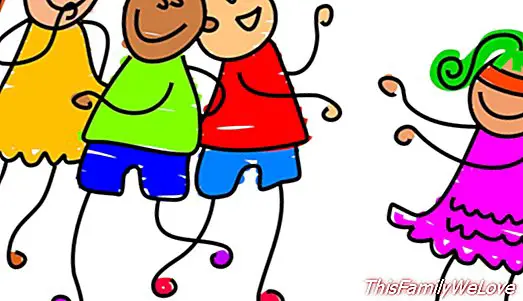6 exercises of spatial ability for children
Spatial ability, and especially spatial relationships, are not consolidated until 10 years. But more important than going fast, is doing it with order and perseverance. After about two and a half years, we can complicate matters a little more since the ability of children's language begins to take more complex forms and becomes an ally for spatial learning.
With these exercises and games for children, you will be able to take advantage of the time by having a fun time with your children, while taking advantage to consolidate their spatial ability. I'm sure many of them sound good to you and you've even played some time already. Discover now what each one has to improve the spatial ability of your children.
6 exercises and games to refine the spatial ability of children
1. PASS THE BALL. To remember directions and situations. Place a child in front of different people or objects so that he / she can say: the names of the children on their right, those on their left, those in front of them, etc. You can "complicate" as much as you want, changing their positions of them, or those of other people or other objects.
2. APPRECIATION OF DISTANCES. "I SEE I SEE... To relate situations and distances of various objects. Give the opportunity to observe the objects in the room. Then, ask him questions like: tell me two objects that are the same distance, one that is farther, closer, higher, lower, more to the left, more to the right, etc.
3. THE BLIND HEN. To improve the internal knowledge of sensations (proprioception). Touch different points of the body. Then, ask him to point out on the drawing of a human body the places where he was touched.

4. MAPS. To improve your knowledge of outer space. Describe a tour of the house. You have to know that if you follow exactly the indicated route you will reach the goal, otherwise you will not. For example: stand in front of the refrigerator, take two steps to the left, three steps forward, turn around the column on the left, etc.
5. THE ROBOT. A variant of the previous game for slightly older children. Here is the child who must direct the steps of an adult or another child to take it to the goal. To do this, you must describe the movements that the other person should make. It can be complicated by playing "on the contrary": that is, the order must be interpreted backwards, so the child will have to think in the right direction first and then say the opposite. Thus he practices "reversibility".
6. THE ARCHITECT. Represent graphically the different rooms of the house (make plans), the classroom of the school, the grandparents' lounge, etc. They must correctly place all the furniture and decorative elements that are in each place and strive to represent all the elements present.
Teisa Dalmau Xiqués




